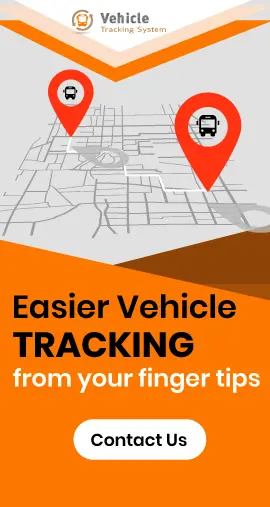Key Drawbacks of Using GPS Vehicle Tracking Systems
May 16th, 2017
GPS vehicle tracking systems are becoming a norm rather than a fad nowadays. It lets you know the location of your vehicle with accurate latitude and longitude details.
GPS tracking systems are definitely a boon in so many ways in effective time management of travel services. But, as the saying goes, every coin has two sides. These units have their own drawbacks when it comes to utilizing their services.
1. GPS Location can be inaccurate sometimes
A GPS unit calculates the location of the device by receiving and interpreting the signal from 3 or more satellites. However, technical difficulty can cause blocking of these signals when the line of sight is blocked by tall buildings, trees or obstacles in the pathway. Any such issues might cause GPS units to show inaccurate position and can cause you problems.
There is also the issue of ‘Canyon Effect’ resulting from being surrounded by tall buildings blocking GPS signal. The signal might keep bouncing around and therefore fail to reach the GPS unit. GPS units calculate the position and time based on the time required to receive the signal.
Satellites transmit the signal at a specific rate. The detectors in GPS units are accurate only up to 10 nanoseconds. Simply, in terms of distance, this is about 3 meters. This is the highest accuracy that any standard GPS unit can offer. Military version might be more accurate, up to 300 millimetres.
Another important issue is the discrepancy between the GPS receiver clock timing and the satellite timing which synchronizes the GPS system worldwide. This can make the time drift away from actual time.
Using a highly precise atomic clock might render the GPS units uneconomic. An alternative solution is to utilize special algorithms to account for the time keeping error and reset the clock.
All these issues can be solved to a greater extent by employing GPS units which lock signals from more than three satellites and precise algorithms.
2. Battery might drain out
Power stoppage can result in malfunctioning of the GPS unit, especially the GPS systems which work with solar power or those with a good battery life. A passive GPS unit consumes lots of power even when the vehicle is idle.
Some of the commercial GPS units switch over to sleep mode when the vehicle is idle or parked so that the battery duration gets longer. Or you can resort to versions for which batteries are easily replaceable.
3. Employees might feel offended
Not all employees might feel the same when they are tracked remotely. They should not feel that they are being spied upon. Considering the advantages offered by a GPS such as safety and protection from theft, convincing your employees to utilize the services of GPS vehicle tracking systems might not be a difficult task.
4. Environmental conditions
Environmental conditions might turn drastic. For example, in case of solar flares, the satellite signals might get affected. However, governmental agencies announce them early so that those with the GPS units can take precautionary steps to overcome this difficulty. It might be wiser for you to carry a map in those days.
5. Monitoring travel data might consume time and labour
As fleet managers, you might have to spend considerable time in monitoring the units for an accurate analysis.
6. Human intervention
Technological spying is a form of electronic warfare and can silently affect these GPS vehicle tracking systems. GPS jammers are also on the rise, especially used by disruptive forces. You might be not able to circumvent the effects of these issues.
However, there are other unseen hindrances to GPS signal reception caused by you. A major disruption can be caused by unknowingly placing a metallic thing blocking the GPS receiver. The GPS antenna can receive signals through plastic, but not through metal surfaces.
Placing the GPS unit near the windscreen might affect signal quality in newer vehicles with metalized glass. Same is the case when your vehicle has a heated windshield. Heating strips made of extremely thin tungsten wires are nearly invisible when laid in the windshield glass to keep the ice away.
Such interferences can be solved by placing the GPS antennae in a proper location within the vehicle after considering the make and type of the vehicle and its compatibility with the unit.
Conclusion
In short, GPS vehicle tracking systems have their set of drawbacks, but these are not serious enough to outweigh the positives. With further technological advancements, these flaws would surely be overcome, helping businesses with even more effective data.
So, what do you think? Please share your comments with us below.

